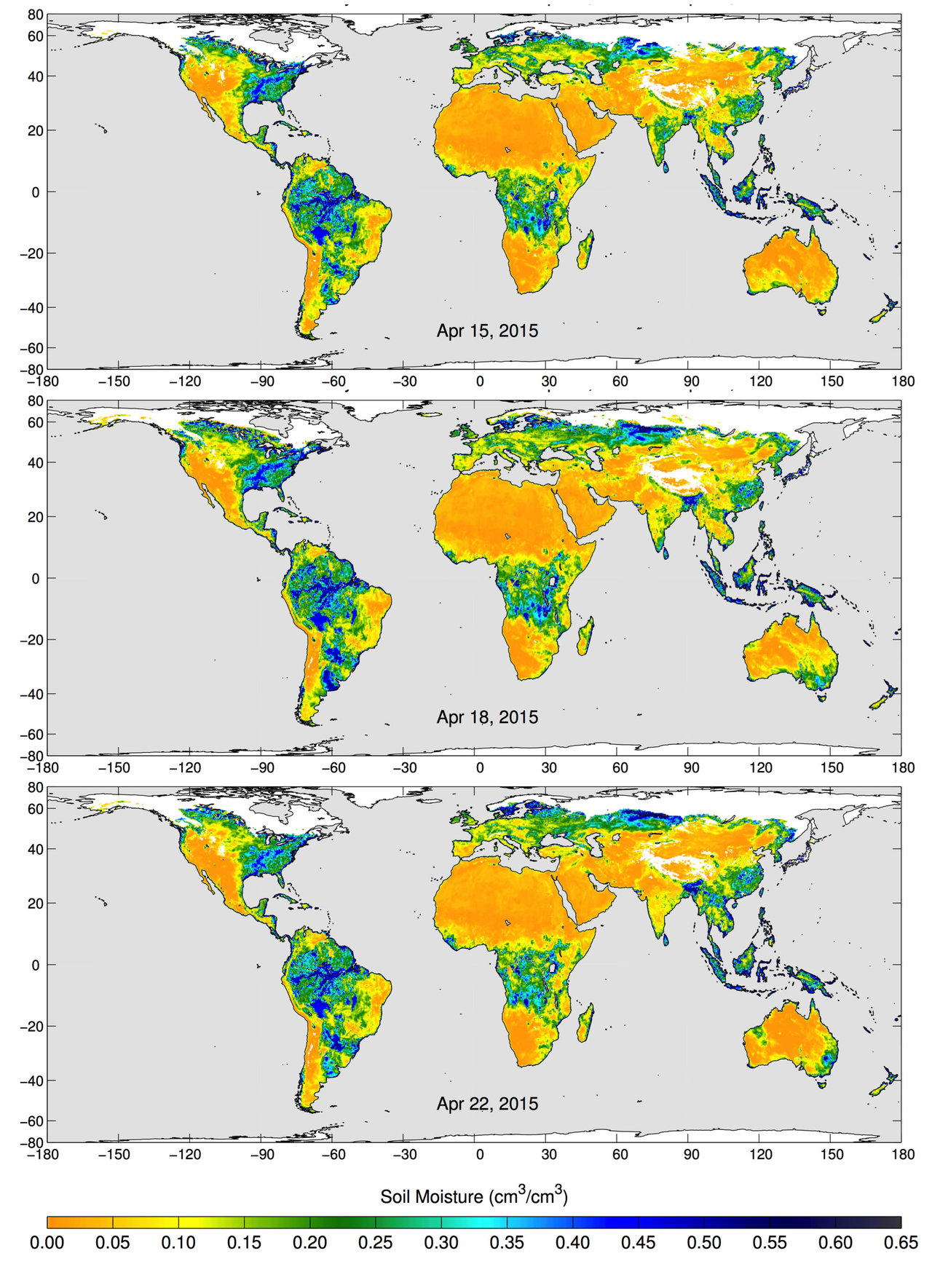News | May 5, 2015
SMAP's Radiometer Captures Views of Global Soil Moisture

The images from April show the volumetric water content in the top 2 inches (5 centimeters) of soil. Wetter areas are blue and drier areas are yellow. White areas indicate snow, ice or frozen ground.
These maps of global soil moisture were created using data from the radiometer instrument on NASA's Soil Moisture Active Passive (SMAP) observatory. Each image is a composite of three days of SMAP radiometer data, centered on April 15, 18 and 22, 2015. The images show the volumetric water content in the top 2 inches (5 centimeters) of soil. Wetter areas are blue and drier areas are yellow. White areas indicate snow, ice or frozen ground. Evident in the image sequence are regions of increased soil moisture and flooding caused by precipitation during this period in Southeast Australia, Bangladesh and Argentina.
These as yet uncalibrated soil moisture images will be evaluated and improved during the calibration and validation phase of SMAP's science mission, which begins on May 10, 2015.
SMAP launched January 31 on a minimum three-year mission to map global soil moisture and detect whether soils are frozen or thawed. The mission will help scientists understand the links among Earth's water, energy and carbon cycles; help reduce uncertainties in predicting weather and climate; and enhance our ability to monitor and predict natural hazards such as floods and droughts. SMAP maps the entire globe on average every two to three days.
SMAP's radiometer detects differences in microwave emissions caused by water in soil. SMAP measures Earth's natural microwave emission at the frequency of 1.4 gigahertz. The emission is expressed as brightness temperature in Kelvins, and SMAP measures this emission at a horizontal spatial resolution of about 25 miles (40 kilometers). Brightness temperature is a measure of how much microwave radiant energy is emitted upward from Earth's surface to the satellite.
Scientists will combine measurements from SMAP's radiometer and radar sensors to capitalize on the strengths of each. The radar alone can produce a soil moisture measurement with a spatial resolution of about 1.9 miles (3 kilometers), but the measurement itself is less accurate than that made by the radiometer. The radiometer alone achieves a highly accurate observation of soil moisture but with a poorer spatial resolution of about 25 miles (40 kilometers). By combining these separate measurements through advanced data processing SMAP will provide the user community with a combined soil moisture measurement that has high accuracy and a resolution of 5.6 miles (9 kilometers).




